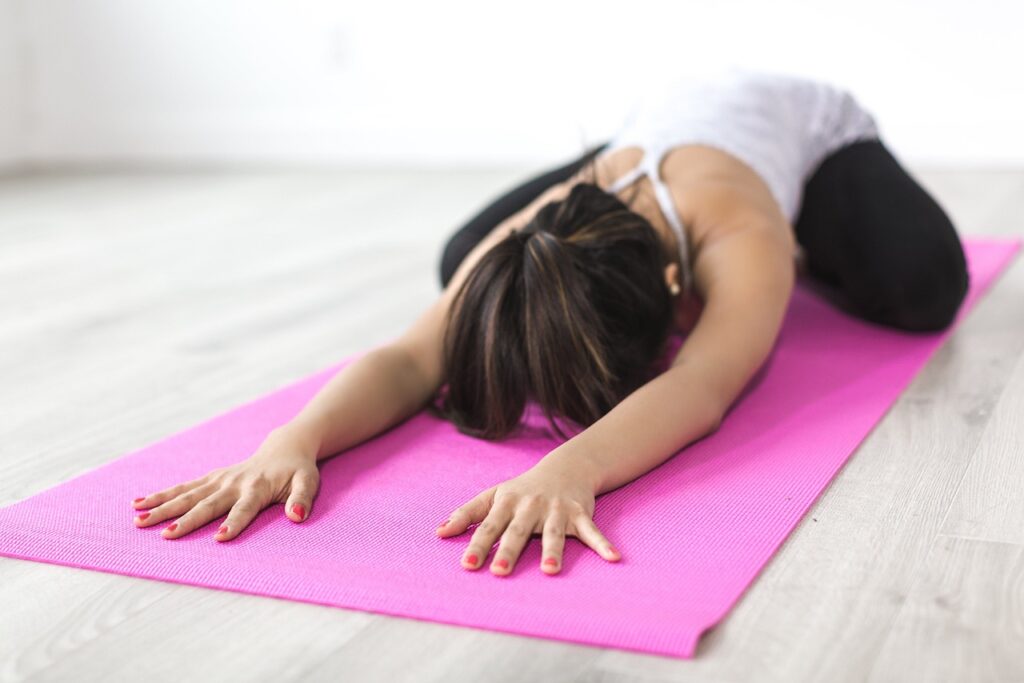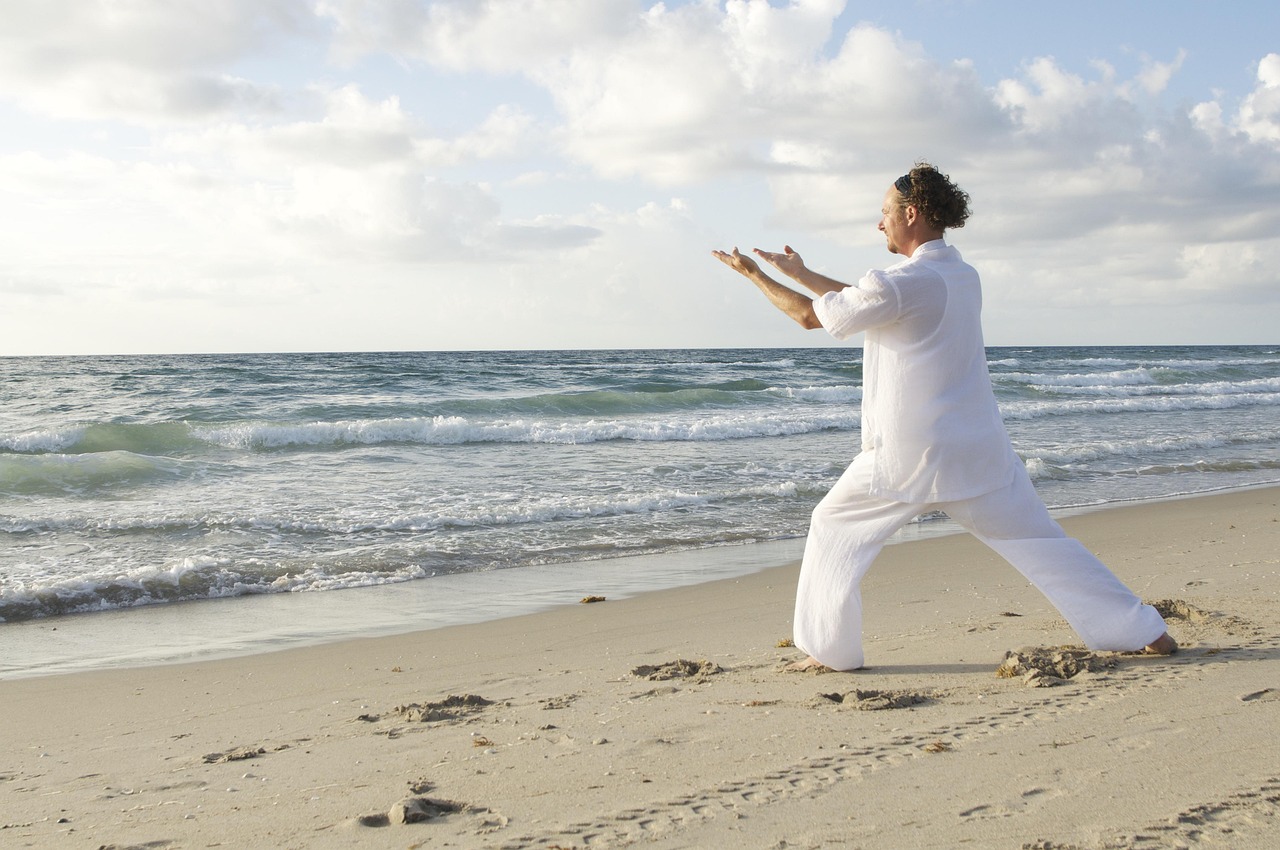Are you new to the world of yoga and wondering how often you should practice? Well, fret not! In this article, we will address the common question of how often beginners should engage in yoga sessions. Whether you’re aiming to increase flexibility, reduce stress, or improve overall well-being, we’ve got you covered with some helpful insights. So, grab your mat and get ready to embark on your yoga journey!
Factors to Consider
When determining how often a beginner should practice yoga, there are several factors to consider. These factors will help guide you in finding a frequency that suits your needs, abilities, and goals.
Physical Condition
One important factor to consider is your physical condition. If you are just starting out and have limited flexibility or strength, it may be best to start slow and gradually increase your practice. On the other hand, if you are already in good physical shape, you may be able to handle a more intensive practice right from the beginning. It’s essential to listen to your body and choose a frequency that allows for proper progression without overexertion.
Time Availability
Another factor to consider is your time availability. Ideally, you want to dedicate enough time to your yoga practice to reap its benefits fully. Assess how much time you can realistically commit to yoga each week. Consider your other commitments and responsibilities and find a balance that allows you to consistently practice without feeling overwhelmed or rushed.
Goals and Objectives
Your goals and objectives are also crucial in determining how often you should practice yoga. If you are looking to improve flexibility or build strength, a more frequent practice may be necessary. On the other hand, if you are seeking stress relief and relaxation, a more moderate practice frequency may be sufficient. Clearly define your goals and choose a practice frequency that aligns with what you aim to achieve.
Initial Frequency
When starting your yoga journey as a beginner, it’s important to ease into your practice gradually. Here are some guidelines to help you establish your initial frequency:
Start Slow
It’s advisable to start slow and not overwhelm yourself with too many sessions initially. Begin by practicing yoga two to three times a week. This will allow your body to adapt and prevent burnout or injury. As you become more comfortable with the practice, you can gradually increase the frequency.
Build a Foundation
In the early stages of your yoga practice, it’s essential to build a strong foundation. By practicing consistently, you will develop proper alignment, learn essential yoga poses, and improve your overall understanding of the practice. Consistency is key in establishing this foundation.
Consistency is Key
Consistency plays a vital role in any yoga practice, especially for beginners. It’s better to have a consistent practice schedule, even if it means practicing fewer days per week. The benefits of regular practice are cumulative and will become more noticeable over time. Commit to a schedule that you can realistically maintain and be consistent in showing up on your mat.

Types of Yoga
Yoga offers various styles, each with its own unique characteristics and benefits. As a beginner, it can be overwhelming to choose which style to pursue. Here are some popular types of yoga you may encounter:
Hatha Yoga
Hatha yoga is a gentle and slow-paced style that focuses on the alignment of poses and breath control. It is an excellent choice for beginners as it provides a foundation for other yoga styles.
Vinyasa Yoga
Vinyasa yoga is a more dynamic and flowing style that emphasizes linking breath with movement. It offers a good balance between strength and flexibility and is suitable for those looking for a more active practice.
Ashtanga Yoga
Ashtanga yoga is a rigorous and demanding style that follows a specific sequence of postures. It is ideal for individuals seeking a physically challenging practice and enjoy a structured routine.
Iyengar Yoga
Iyengar yoga focuses on precise alignment and the use of props to support the practice. It is suitable for beginners who want to cultivate proper form and strength in each pose.
Restorative Yoga
Restorative yoga is a gentle and relaxing style that incorporates props to support long-held poses. It promotes deep relaxation and is ideal for stress relief and healing.
Bikram Yoga
Bikram yoga is practiced in a heated room and follows a specific sequence of 26 poses. It aims to improve strength, flexibility, and detoxification through its challenging and intense nature.
Kundalini Yoga
Kundalini yoga combines physical postures, breathwork, meditation, and mantra chanting. It focuses on releasing energy and awakening consciousness. It is suitable for those looking for a more spiritual practice.
Benefits of Regular Practice
Practicing yoga regularly offers a wide range of benefits for both the body and mind. Here are some key advantages you can expect from maintaining a consistent yoga practice:
Improved Flexibility
Regular yoga practice gradually enhances flexibility by stretching and lengthening muscles. Over time, you will notice increased range of motion and improved posture.
Increased Strength
Yoga poses require engaging and stabilizing various muscle groups, resulting in increased strength. As you progress in your practice, you will notice improved muscle tone and overall physical resilience.
Better Breathing
Yoga incorporates breathwork techniques that help deepen and expand your breath capacity. As you develop conscious breathing habits, you will experience improved lung function and a sense of calm.
Enhanced Mindfulness
Yoga encourages mindful awareness of the present moment by focusing on breath, movement, and sensations in the body. Regular practice cultivates mindfulness, leading to a greater ability to stay present in daily life.
Stress Relief
Yoga is known for its stress-reducing effects. Through physical movement, breathwork, and relaxation, yoga helps release tension, promotes relaxation, and calms the mind. Regular practice can significantly reduce stress levels and enhance overall well-being.
Weight Management
A consistent yoga practice can contribute to healthy weight management. Yoga’s physical movements, combined with its mindful approach, promote a balanced relationship between body and mind, leading to healthier lifestyle choices.

Recommended Weekly Frequency
Based on the factors mentioned earlier, here are some recommended weekly frequencies for beginners:
2-3 Days
If you are just starting out, incorporating yoga into your routine two to three days per week is a suitable starting point. This frequency allows for consistent practice while allowing your body time to adapt and recover.
4-5 Days
Once you have established a foundation and feel comfortable with the practice, increasing your weekly frequency to four to five days can deepen your progress. This level of commitment allows for more consistent growth and improvement.
Every Day
For individuals with ample time and dedication, practicing yoga every day can be highly beneficial. Daily practice maximizes the benefits of yoga and allows for a more intensive and transformative experience. However, this frequency may not be suitable for everyone, so it’s important to assess your physical condition and goals before committing to daily practice.
Progressive Approach
As you continue your yoga journey, it’s important to adopt a progressive and sustainable approach. Here are some guidelines to help you progress safely:
Gradually Increase
Whether you are increasing your weekly frequency or duration of each session, it’s important to do so gradually. Gradually increasing the intensity and duration of your practice allows your body to adapt and reduces the risk of injury or burnout.
Listen to Your Body
Always listen to your body and honor its limits. Pay attention to any physical discomfort or signs of overexertion. If something doesn’t feel right, modify or skip certain poses. It’s essential to find a balance between challenging yourself and respecting your body’s needs.
Take Rest Days
Rest days are just as important as active practice days. They allow your body to recover and rejuvenate. Even if you feel motivated to practice every day, make sure to incorporate rest days into your weekly schedule to prevent exhaustion and promote overall well-being.

Duration of Each Session
The duration of each yoga session can vary depending on your goals, time availability, and physical condition. Here are some guidelines for different durations:
30 Minutes
A 30-minute yoga session can be a great way to fit yoga into a busy schedule. It provides enough time to stretch, strengthen, and relax the body. This duration is suitable for beginners who are starting to build their practice or for individuals looking for a quick refresh.
45 Minutes
A 45-minute yoga session allows for a more comprehensive practice. It gives you additional time to explore different poses, sequences, and aspects of breathwork and meditation. This duration is ideal for those looking for a more balanced and well-rounded practice.
60 Minutes
A 60-minute yoga session is the standard duration for most yoga classes. It provides ample time for a complete yoga practice that includes warm-up, poses, breathwork, and relaxation. This duration is suitable for individuals who want a thorough and structured practice.
90 Minutes
A 90-minute yoga session is commonly found in more advanced classes or workshops. It allows for a more immersive and in-depth practice, with additional time for challenging poses, advanced sequences, and extended relaxation. This duration is recommended for practitioners looking to deepen their practice or explore more advanced techniques.
Joining Classes vs. Self-Practice
Deciding whether to join yoga classes or practice on your own is a personal choice. Both options offer unique benefits, and you can choose the approach that suits your preferences and needs.
Finding a Qualified Instructor
If you decide to join yoga classes, it’s important to find a qualified instructor who can guide you safely and effectively. Look for certified instructors with experience, a genuine passion for teaching, and a teaching style that resonates with you. A qualified instructor will provide proper guidance, corrections, and modifications when needed.
Benefits of Group Classes
Attending group classes provides a supportive and motivating environment. Being part of a community of like-minded individuals can enhance your practice experience and foster a sense of camaraderie. Group classes also offer structure and accountability, ensuring you show up and dedicate time to your practice.
Practicing at Home
Practicing yoga at home allows for flexibility and convenience. It gives you the freedom to practice at your own pace, explore personal preferences, and experiment with different styles. However, self-practice requires self-discipline and self-motivation. It’s important to create a dedicated space, eliminate distractions, and follow a well-rounded practice to ensure a fulfilling experience.
Modifications for Beginners
As a beginner, it’s common to encounter certain challenges or limitations in your yoga practice. Here are some modifications that can help you navigate these hurdles:
Use Props
Props such as blocks, straps, and blankets can assist in achieving proper alignment and make poses more accessible. They provide support and aid individuals with limited flexibility or strength. Don’t hesitate to utilize props to enhance your practice.
Focus on Alignment
Proper alignment is key to avoiding injuries and maximizing the benefits of each pose. Focus on aligning your body according to the cues provided by your instructor or detailed instructions in yoga literature. Pay attention to the positioning of your feet, hands, and spine to ensure proper form and optimal results.
Start with Gentle Yoga
If you are new to yoga or have physical limitations, starting with gentle yoga classes or sequences can be a wise choice. Gentle yoga focuses on slow and mindful movement, making it suitable for beginners and individuals with injuries or health conditions. Gradually progress to more challenging styles as you build strength and confidence.
Listen to Your Body
The most important aspect of any yoga practice is to listen to your body. Each individual’s body is unique, and you know your body better than anyone else. If a pose feels uncomfortable, adjust it to suit your needs. Take breaks when necessary, and avoid pushing beyond your limits. Remember that yoga is a personal practice, and your journey is unique to you.
Monitoring Progress
As you continue your yoga practice, it’s beneficial to periodically assess your progress. Here are some areas to observe:
Observe Strength and Flexibility
Pay attention to changes in your strength and flexibility over time. Notice how your body adapts to different poses and how your range of motion improves. Celebrate your progress, no matter how small, as it indicates growth in your practice.
Evaluate Balance and Stability
Yoga poses require balance and stability. Observe how your balance improves with consistent practice and how you become more rooted in your poses. Notice the stability you develop and the increased ability to hold challenging poses.
Assess Mindfulness
Yoga is not just a physical practice; it is a mindful practice. Observe how your ability to stay present and maintain focus deepens as you progress. Notice how yoga extends beyond the mat and starts to influence your mindset and daily life.
Notice Changes in Well-being
Yoga is known to have a positive impact on overall well-being. Pay attention to any changes in your mental, emotional, and physical well-being. Reflect on how yoga has influenced your life and how it continues to bring positivity and balance.
In conclusion, how often a beginner should practice yoga depends on individual factors such as physical condition, time availability, and goals. It is recommended to start slow, build a foundation, and be consistent with regular practice. There are various types of yoga to explore, and the benefits of regular practice include improved flexibility, strength, breathing, mindfulness, stress relief, and weight management. Beginners can begin with two to three days per week and gradually increase frequency as they progress. It’s important to have a progressive approach, listen to your body, and take rest days. The duration of each session can vary, and beginners can choose between joining classes or practicing at home. Modifications, proper alignment, and mindfulness are essential for beginners, and progress can be monitored through observation of strength, flexibility, balance, stability, mindfulness, and overall well-being. Embrace your yoga journey, trust the process, and enjoy the transformative effects of consistent practice.

